Gail Barber Shares 3 Common Problems When Growing Fuchsia (And How To Fix Them)

SHRUBS > FUCHSIA > PROBLEMS

Elizabeth is a Permaculture Garden Designer, Sustainability Consultant and Professional Writer, working as an advocate for positive change. She graduated from the University of St. Andrews with an MA in English and Philosophy and obtained a Diploma in Applied Permaculture Design from the Permaculture Association.
Reviewed By COLIN SKELLY

Colin is a Horticulturist and Horticultural Consultant with experience in a range of practical and managerial roles across heritage, commercial and public horticulture. He holds the Royal Horticultural Society’s Master of Horticulture award and has a particular interest in horticultural ecology and naturalistic planting for habitat and climate resilience.
Contributions From GAIL BARBER

Gail Barber is the Secretary of the Sutton Coldfield Fuchsia & Gardening Guild with experience of more than 50 years in the garden. Gail even has a cultivar of Fuchsia named after her.
IN THIS GUIDE
FUCHSIA GUIDES
Container Growing
Hanging Baskets
Hardy
Overwintering
Problems
Propagation
Pruning
Sowing
Varieties
Fuchsias can be extremely attractive plants.
They fall into one of two categories: hardy fuchsias, which can be grown outside year-round in British gardens, and tender fuchsias, which are typically overwintered indoors or under cover.
Whichever fuchsia you are growing, these plants tend to be fairly easy to grow, but you may encounter a range of growing problems and issues, including:
- Environmental problems such as sunlight and water (or a lack thereof).
- Issues with pests such as aphids, red spider mites and whitefly.
- Diseases such as fuchsia rust and grey mould.
Fortunately, many of these problems are relatively easy to overcome.
Below, we will take a brief look at some common issues and how to tackle them if you encounter them when growing fuchsias where you live.
1) Environmental Problems
“Like many plants, the easiest way to kill a fuchsia is to give it too much or not enough water,” explains Gail Barber from the Sutton Coldfield Fuchsia Society and Gardening Guild.
“Fuchsias are not fussy plants. However, if they are growing in pots, especially small pots, they must not be allowed to sit all day in scorching sunshine.
“Move the plants into the shade in hot weather, keeping the compost damp but not soaking.”
One other important thing to remember when growing fuchsia is the hardiness of the particular variety that you are growing.
Tender fuchsia will not typically survive low winter temperatures in most British gardens.
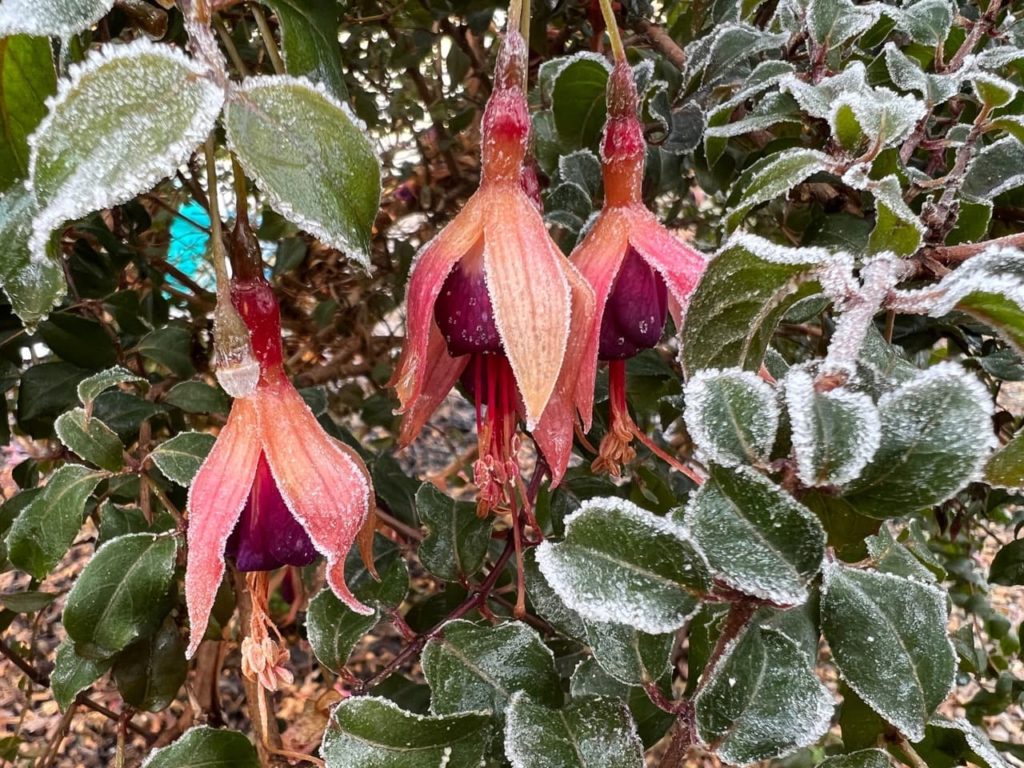
Hardy fuchsias may sometimes die back over winter but will survive below ground and should grow back in the spring if they do so.
“The more you handle your plants, the easier it will become to know the weight of the pots, whether they are too dry, whether the leaves look healthy or if there’s a new problem you haven’t noticed before,” says Gail.
2) Pests
“Like any plants, they do have their pests and diseases,” warns Gail.
“Plants, especially those grown in greenhouses, can suffer from aphids, red spider mites and whitefly.
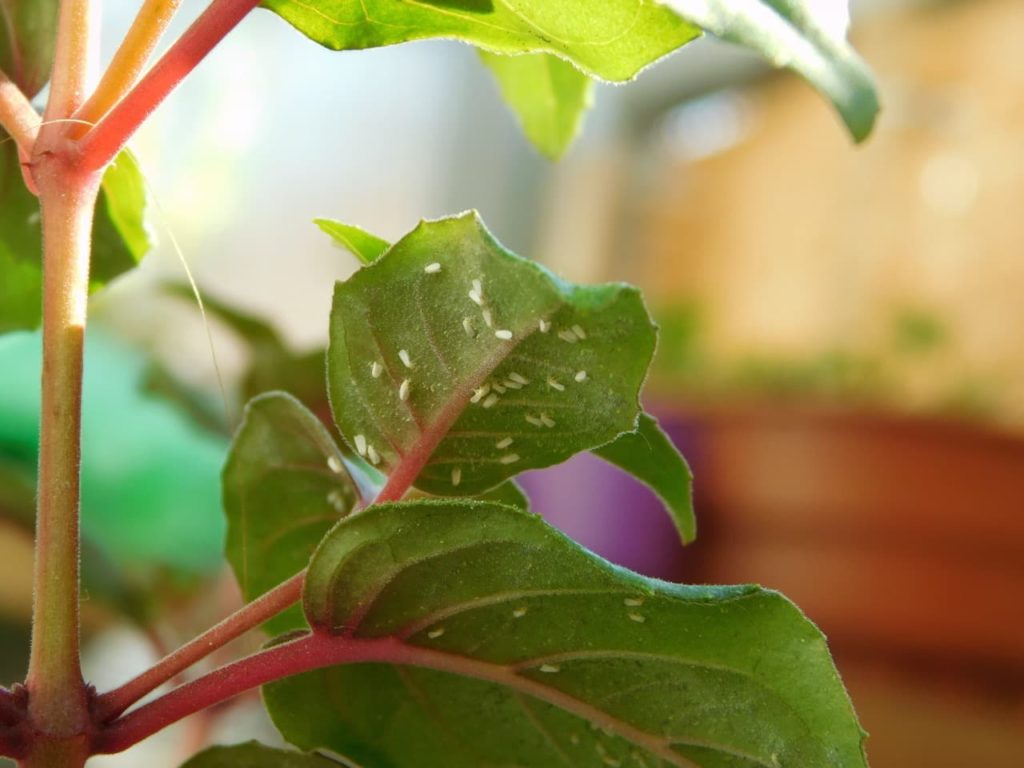
“Keeping a check on your plants is the best way to deal with these.”
We explore these pests in more detail below.
Aphids & Whitefly
Aphids, greenhouse whitefly and other sap-sucking insects can sometimes be minor pests when growing fuchsias.
The latter is typically only an issue when growing fuchsias undercover.
Outdoors in your garden, sap-sucking insects are best handled by attracting their predators such as ladybirds and lacewings in order to keep their numbers down in an organic garden.
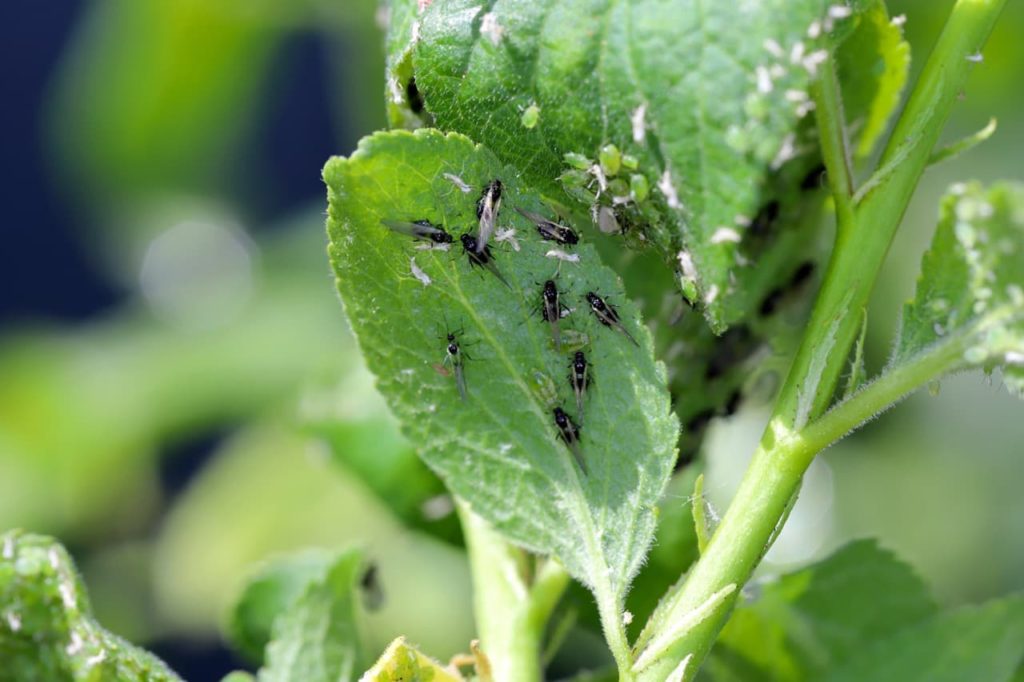
In a greenhouse, you might introduce parasitic wasps or other biological controls.
Keeping the undercover growing area clean over winter and maintaining good ventilation within the space can also help prevent pest populations and the spread of diseases like sooty moulds due to these pests.
Your goal should not be to eliminate them altogether but to keep their numbers down so that they are not a serious issue for your fuchsias and other plants.
Vine Weevil Grubs
“Plants grown outside in a healthy balanced garden face fewer threats from pests,” says Gail.
“However, vine weevil is the nemesis of many gardeners, with their grubs eating the roots of not only fuchsias but hostas, primulas and heucheras to name a few.”
Vine weevil grubs can eat the roots of fuchsia plants, especially those growing in containers.
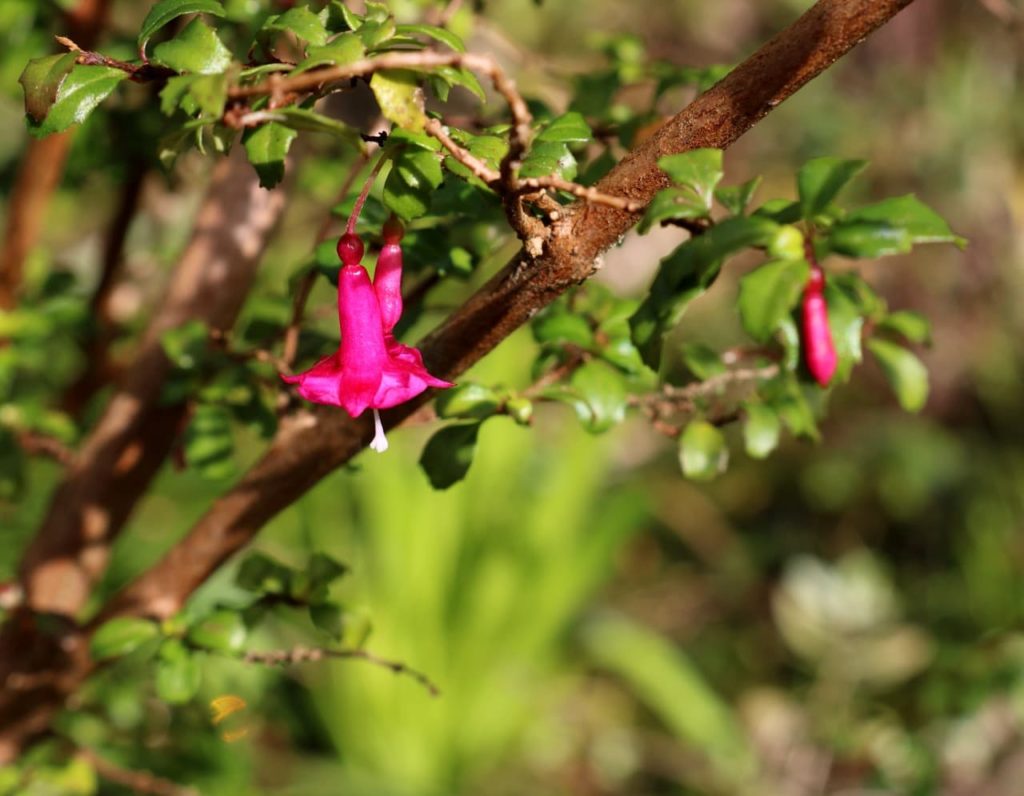
“Plants look completely normal, until one day they fall over after the grubs having eaten through their roots,” Gail explains.
“These can be controlled by the use of nematodes.”
Check for these regularly where they have been a problem, ensuring good hygiene in undercover growing areas and container gardens.
Aim to encourage natural predation of these pests too by attracting things like birds, shrews, hedgehogs, frogs, toads and ground beetles to your garden.
Capsid Bugs
Capsid bugs may also be found causing problems for fuchsias.
As these bugs feed between May and early September, signs of damage will arise on the plants.
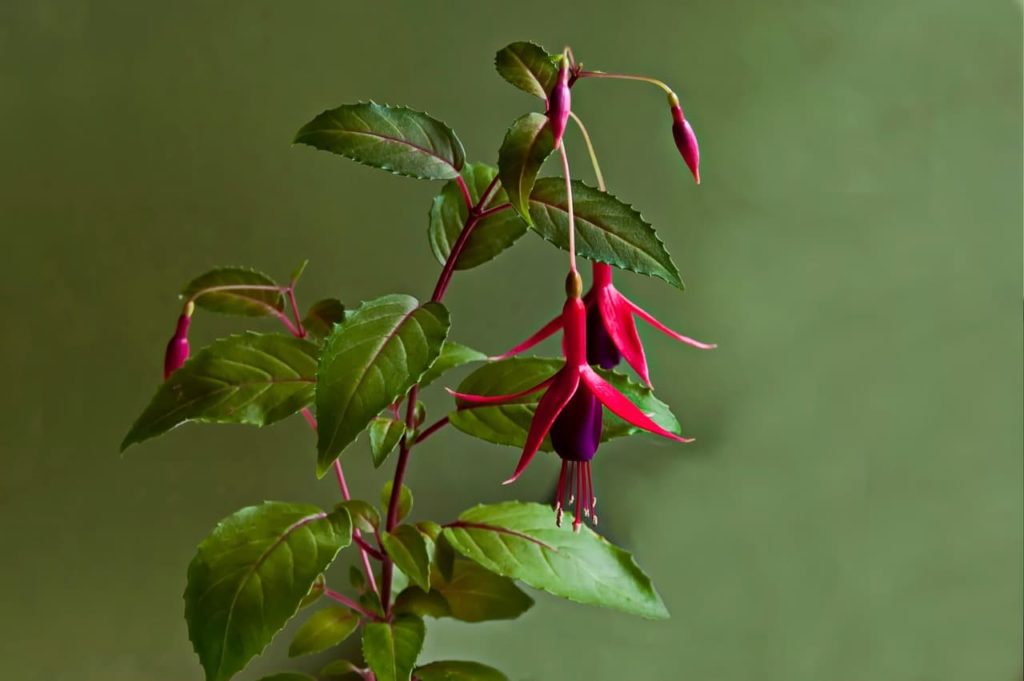
Leaves can become misshapen with brown spots and flower buds on fuchsias may fail to develop and drop off.
However, a mild infestation need not always be a massive problem.
Again, the best strategy to prevent their numbers getting out of control is to encourage natural predators like birds, hedgehogs and ground beetles to take up residence nearby.
Mealybugs
If you are growing fuchsias in a greenhouse then you may have a problem with mealybugs, which are common on houseplants and greenhouse container plants too.
These bugs weaken plants and the honeydew they excrete allows the growth of sooty moulds.
Large populations of these pests can stunt the growth of your fuchsias and reduce vigour.
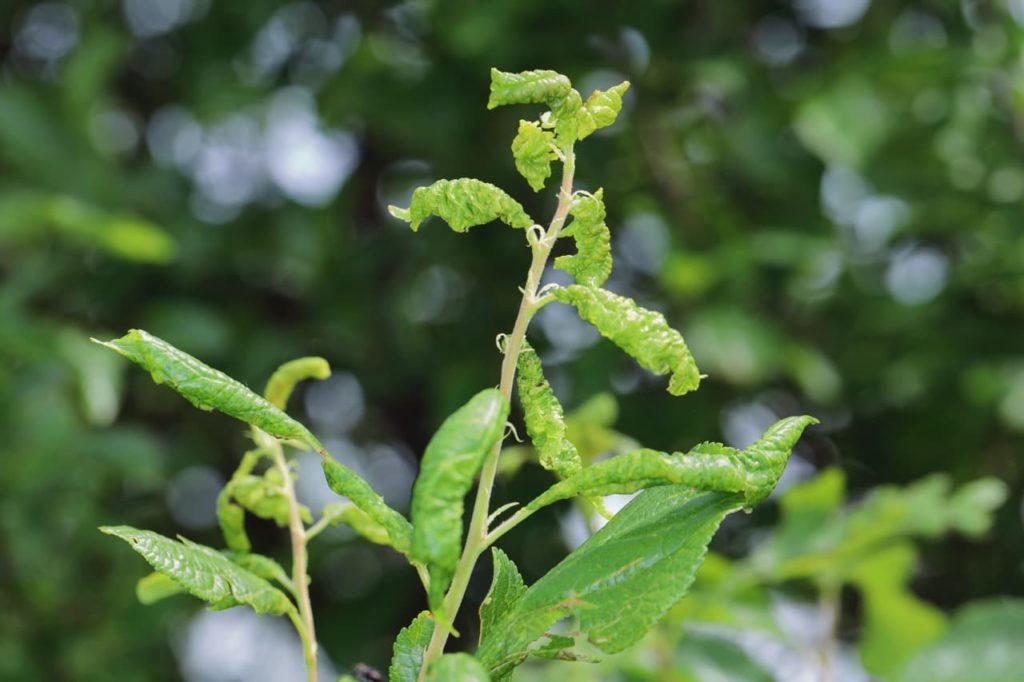
Sometimes, leaves may drop early.
Check plants before bringing them into your greenhouse or garden, keeping new plants quarantined to make sure mealybugs or other pests are not introduced.
In some cases, biological controls can be considered to tackle a serious greenhouse infestation, though small populations can usually be tolerated.
“I have used biological controls for mealybugs in the past,” shares Colin Skelly, a Master Horticulturist.
“I used an Australian ladybird larvae that is a voracious predator of mealy bugs. The temperatures need to be warm when introduced as they will become dormant in cooler weather.”
Fuchsia Flea Beetle
These metallic blue beetles make holes and small brown patches in the leaves of fuchsia plants and are active from April to September.
They are around 5mm long, which is larger than most other flea beetles found in Britain.
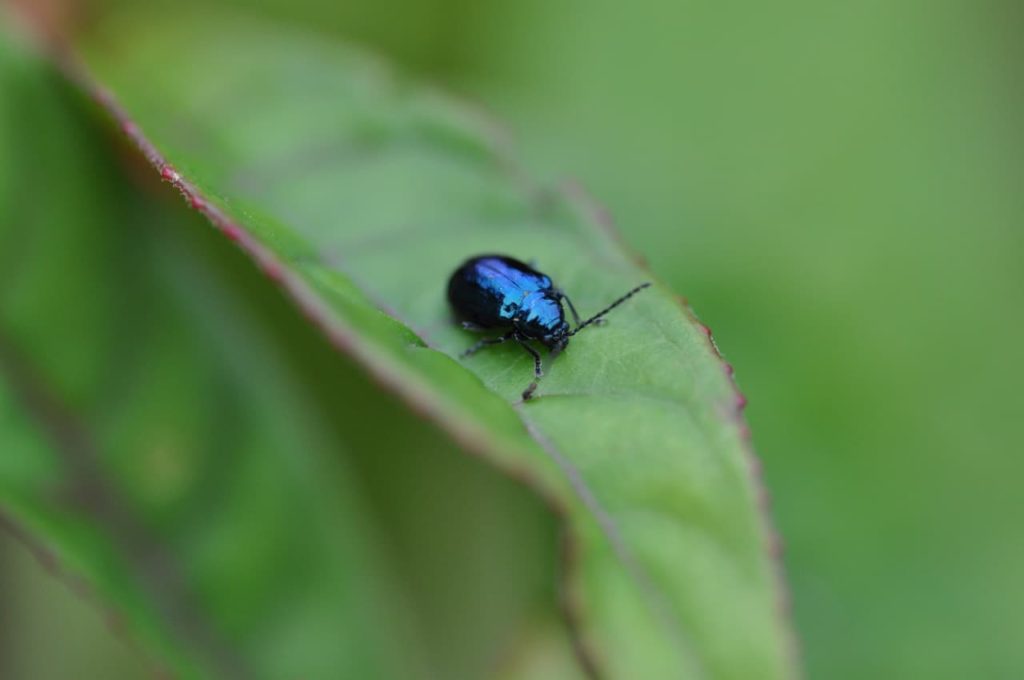
Small amounts of leaf loss will not usually be a major problem, so small populations of these flea beetles can typically be tolerated as part of the garden ecosystem.
These beetles are a food source for beneficial wildlife like birds, frogs and ground beetles, so making sure you have plenty of these around should keep this minor pest in check.
Red Spider Mite
Red spider mites are sap-sucking mites that can cause mottled leaves and leaf drop on fuchsia plants.
A heavy infestation can even kill the plants.
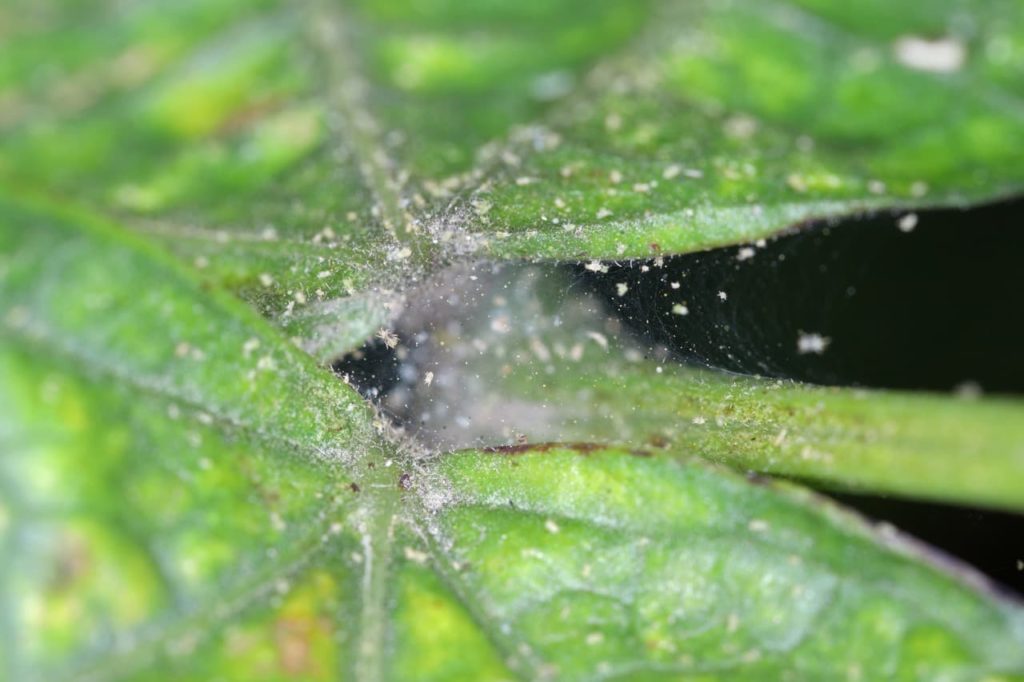
Undercover, red spider mites can be difficult to control and they breed rapidly in warm conditions.
Raising the humidity in a greenhouse, cleaning regularly, avoiding overcrowding and clearing out badly infected plants can help to reduce this problem.
In extreme cases, biological controls like predatory mites and predatory midges might be introduced.
Fuchsia Gall Mite
A relatively new pest for fuchsia growers to worry about is the fuchsia gall mite, which was first found in mainland Britain back in 2007 and which has now spread throughout southern England and northwards into Wales.1Fuchsia gall mite / RHS Gardening. (n.d.). Royal Horticultural Society. Retrieved March 29, 2023, from https://www.rhs.org.uk/biodiversity/fuchsia-gall-mite
It can cause swollen and distorted growth at the shoot tips on fuchsias, often with red or yellowish-green discolouration.
The flowers can also be deformed or may fail to develop altogether.
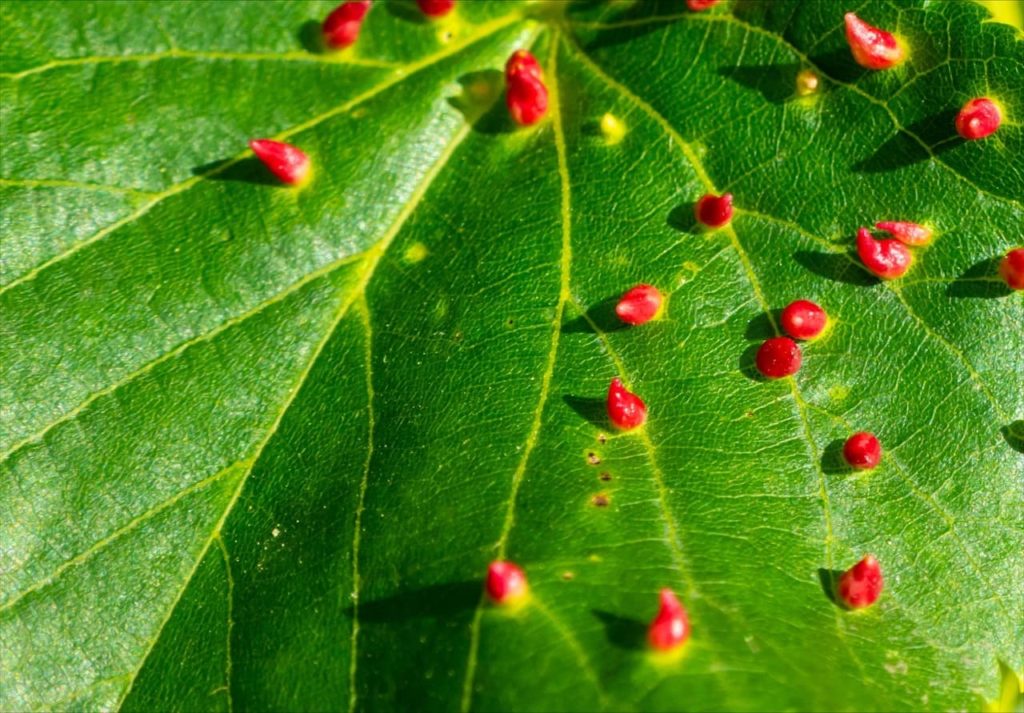
The mites themselves are too small to be seen without a microscope.
This mite does not kill fuchsias but it can affect their growth and appearance.
If you encounter this problem, choose less susceptible varieties of fuchsia.
In some cases, a predatory mite can also be introduced as a biological control.
3) Diseases
Fuchsia Rust
One fungal disease of fuchsias is fuchsia rust.
This causes orange pustules to develop on the undersides of the leaves of fuchsia plants.
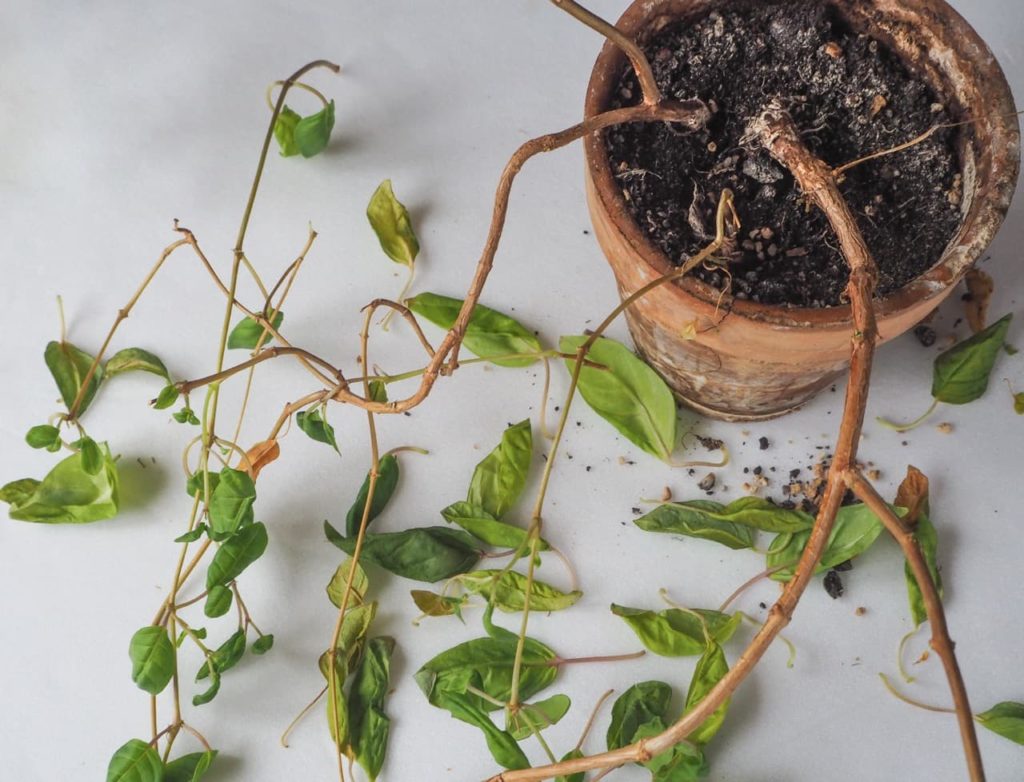
It may also cause leaves to drop off and can reduce the vigour and general health of fuchsia plants.
Pick off any affected foliage from your fuchsias promptly if you notice this problem and give your fuchsias a feed to boost their vigour and resilience.
Grey Mould
Another common fungal problem that can affect fuchsias is grey mould, which causes soft decay of plant tissues, causing stems and leaves to turn brown and develop fuzzy, greyish-brown mould.
It is worst where fuchsias are growing undercover and where conditions are overcrowded and humid.
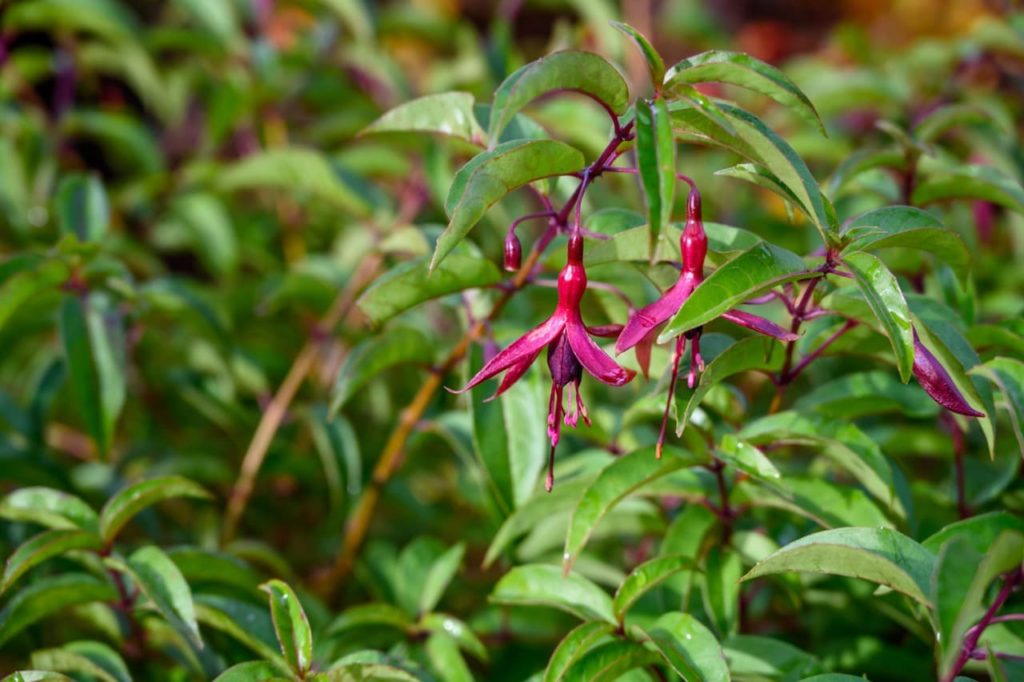
Ensure good ventilation and spacing for good airflow between plants.
Practice good hygiene with your plants and remove any affected material immediately to carefully reduce the spread of this problem.
References
- 1Fuchsia gall mite / RHS Gardening. (n.d.). Royal Horticultural Society. Retrieved March 29, 2023, from https://www.rhs.org.uk/biodiversity/fuchsia-gall-mite
